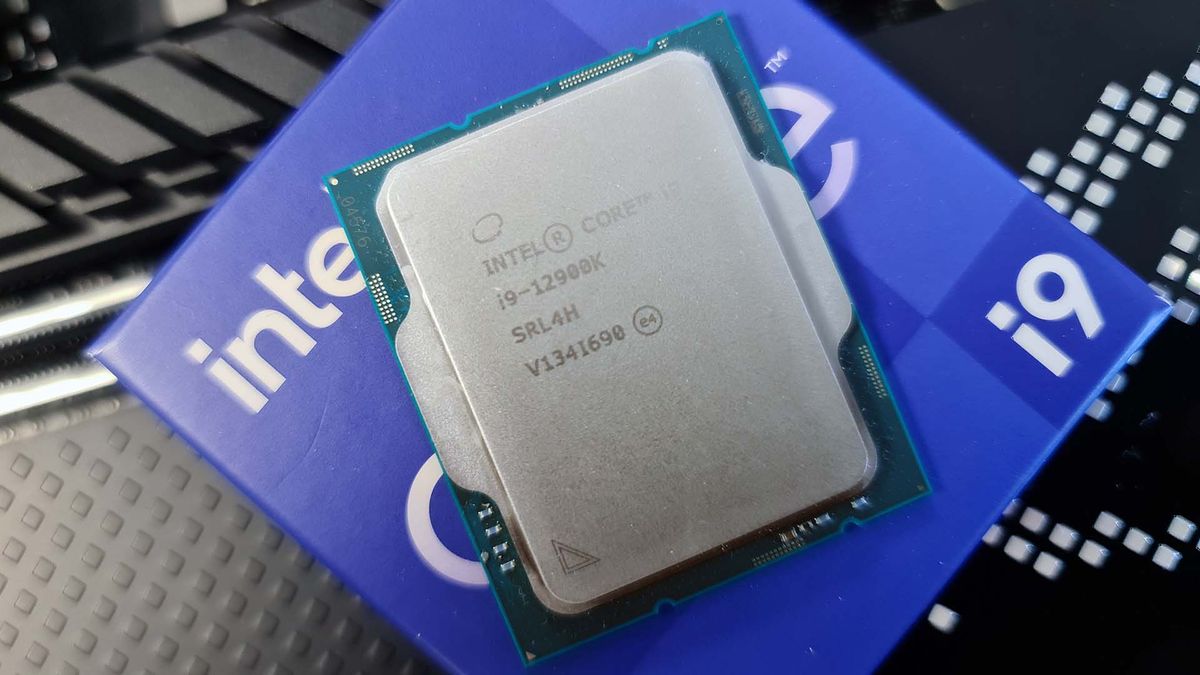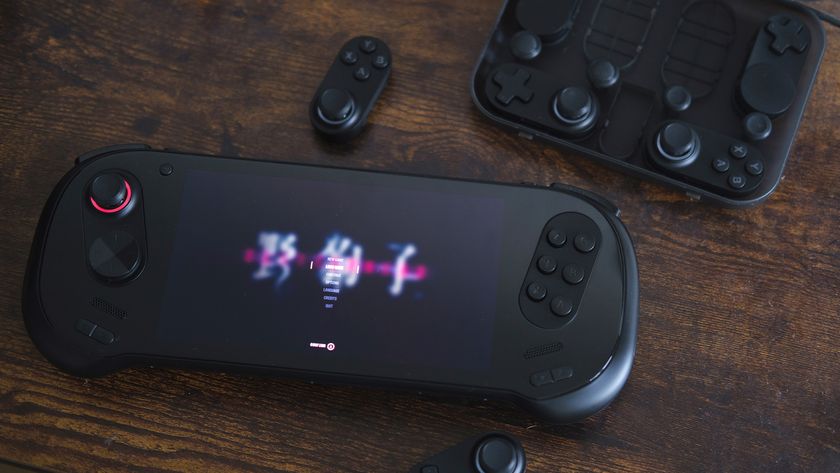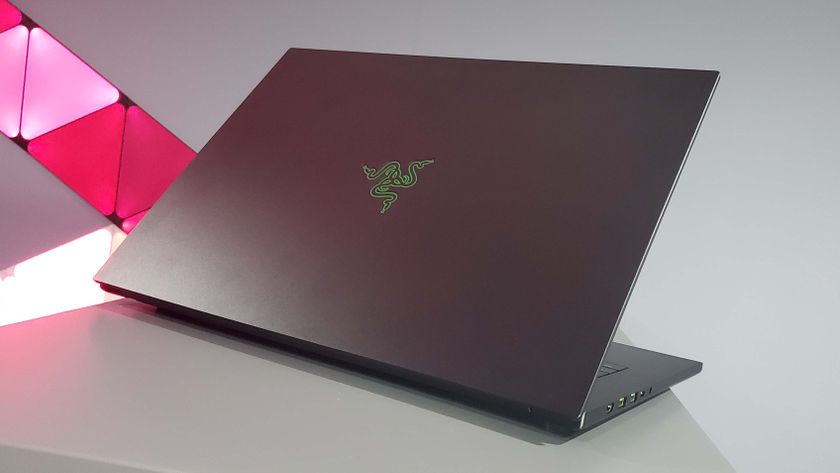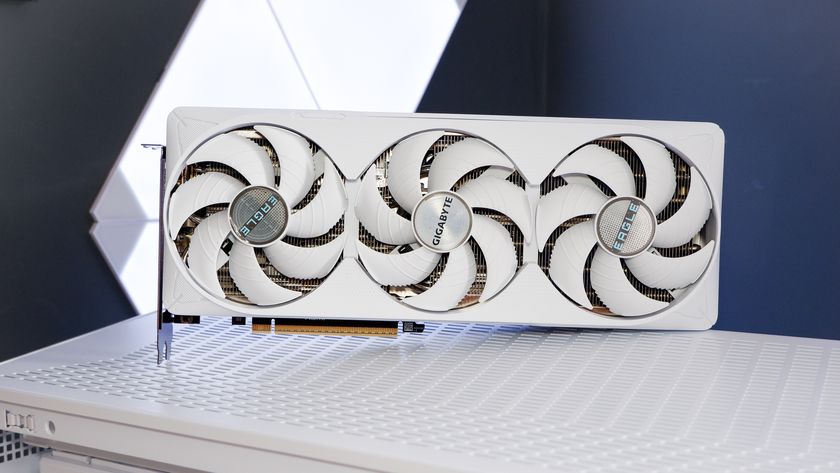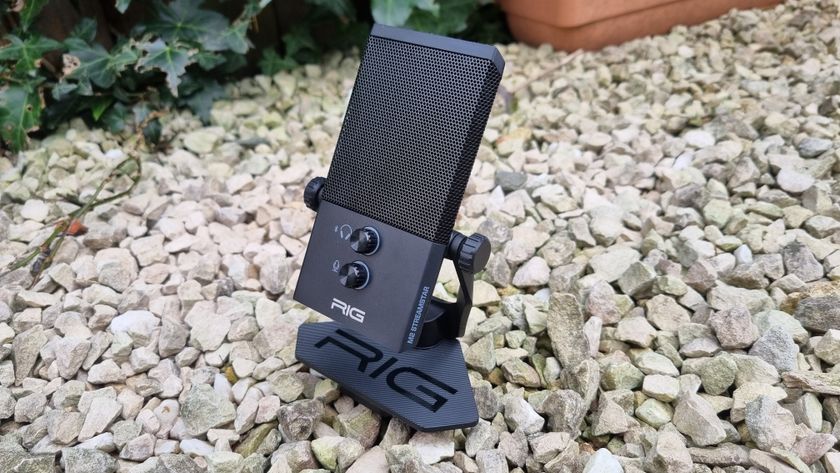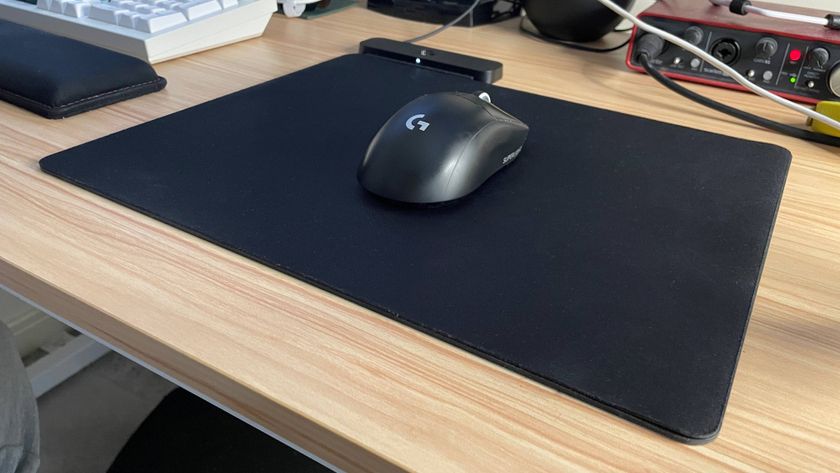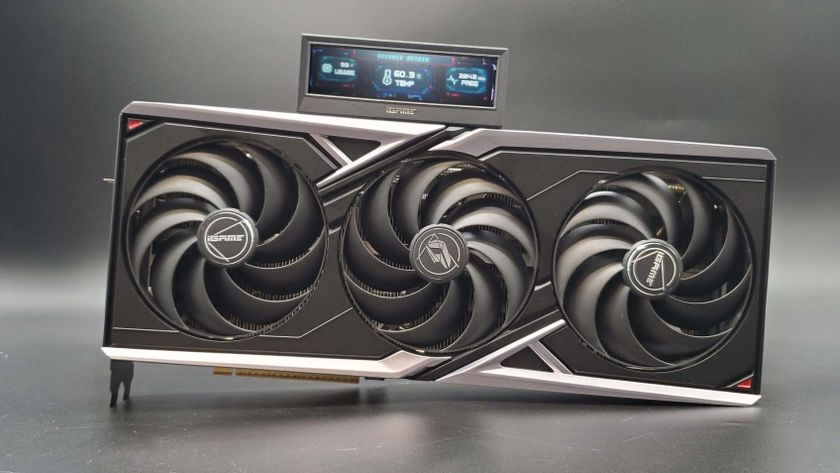Our Verdict
The Core i9 12900K is an enthusiast processor built for boasting. It offers the highest gaming frame rates in most titles and its clever new architecture and cutting-edge features provide multithreaded performance on tap. If you're building a super high-end PC in 2021, this is now the chip to do it with.
For
- Incredible single-threaded performance
- Much improved multithreaded ability
- Big leap for Intel's Core CPUs
- The best desktop platform with DDR5 and PCIe 5.0 support
Against
- Some games don't play nicely with Alder Lake yet
- High power consumption
- Potentially high platform costs at launch
PC Gamer's got your back
Alder Lake may well be the beginning of Intel's push back against a resurgent AMD, but more than that, for the PC gamer in 2021, it's an extremely good gaming chip. And that's really what counts, right?
I can harp on about what this chip means for the heavyweight title fight between x86 goliaths, Intel and AMD, and don't worry I will, but on this site, it ultimately comes down to which is better for gaming and offer us the best bang for our buck. That's often fallen in AMD's favour as of late, whose Ryzen 5000-series processors are all-mighty for gaming and a smart choice for streamers and content creators, but that's set to change with the arrival of Intel's 12th Gen Alder Lake CPUs.
The 12th Gen is Intel claiming back its gaming crown and even does so at a lower price tag than the usually bargainous red team.
It'd be remiss of me not to mention Alder Lake's peculiarities. With every significant shake-up of a piece of computing hardware, there's a bedding-in period that must occur, and Intel's 12th Gen isn't entirely without idiosyncrasies. For one, it comes with the prerequisite of Windows 11 if you desire top performance. But more on that shortly.
Ultimately, the Core i9 12900K offers us a good indication as to whether Intel is back at its best. At the very least, Alder Lake is a huge step in the right direction, but when running at its very best it looks as much the return to form for the chipmaker at the leading edge from the very beginning as it has been made out to be.
Architecture
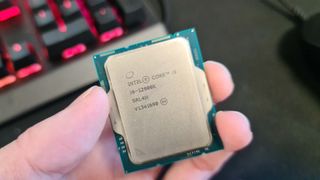
What's different about the Intel Core i9 12900K?
The Core i9 12900K represents the very best in Intel's desktop 12th Generation processors, and what that means is it houses the Alder Lake architecture in its most performant form. At its simplest, that equates to more cores, more speed, and more bandwidth than ever before, but if you dig beneath the surface you'll find a chip architecture that is wildly different to what came before.
With that comes frame rates, OS requirements, and idiosyncrasies. All of which makes for fascinating analysis.
The most notable change of the lot for Intel Alder Lake is the hybrid Core architecture.
So let's dig into it, starting with the process that defines the entire chip: Intel 7. Alder Lake is Intel's first desktop processor to use the Intel 7 process node, which was previously referred to as Intel 10nm SuperFin, and also the first in a very long time to not use the 14nm process node.
Oh, how times have changed. Intel has finally broken free the shackles of 14nm and managed to escape the node that was once so congested it caused a fairly embarrassing pile-up for the chipmaker. With Alder Lake, it's no longer tied to that node, so it's free to do more in the space it's got, and the company says it even expects to shift a lot of Alder Lake chips this side of New Year So perhaps this is some silicon you'll actually be able to buy at launch.
Here's hoping, anyways.
The most notable change of the lot for Intel Alder Lake, though, is the hybrid Core architecture. What this means is that Intel is stuffing all of the K-series 12th Gen chips, those which are arriving at launch, with two types of cores: Performance Cores (P-Cores) and Efficient Cores (E-Cores).
The P-Cores are based on the Golden Cove microarchitecture, which is one step beyond the Willow Lake microarchitecture found in Intel's 11th Gen mobile Tiger Lake processors. In desktop terms, that's roughly two steps on the architectural marathon from the backported Sunny Cove microarchitecture, renamed Cypress Cove, in Intel's 11th Gen Rocket Lake desktop processors, such as the Core i9 10900K.
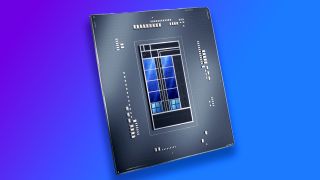
And you're probably already thinking that's a lot of architectural codenames, and you'd be right. Alder Lake is like a Russian nesting doll of architectures. It doesn't get any easier, either, but it is quite a bit more exciting for it.
Alder Lake's P-Cores are more closely related to the CPU cores of previous Intel desktop generations. Take the Core i9 10900K, for example, which has eight CPU cores in total. Consider the 12900K's eight P-Cores in much the same way, although considerably faster.
For gaming these P-Cores are key. They offer the highest clock speeds of the two—on the Core i9 12900K these reach 5.2GHz at times—and nail down slick single-threaded speed for it. They're also built to minimise latency, and they're technically wider and smarter to catch up with the competition. That's AMD's savvy Zen 3 architecture, by the by.
Each P-Core has access to 1.25MB of L2 cache. From there, they're hooked up to 30MB of Intel Smart Cache, which is also shared between E-Cores and onboard integrated graphics (disabled in KF-series chips).
For a marker of performance, the Core i9 12900K's P-Cores are able to surpass the Cypress Cove cores in the Core i9 11900K by a significant margin, and we're yet to touch on the eight Efficient Cores that Intel has stuffed into the 12900K's back pocket.
The Efficient Cores are built on the Gracemont architecture, whose origins are in the Atom lineup. Traditionally built for lower-power, lower-performance processors, Intel has decided that its Atom architecture may find a use in more powerful processors after all, and the Core i9 12900K features eight Gracemont Efficient Cores in total.
That's eight Efficient Cores clustered into two groups of four, each group with access to 2MB of L2 cache. These then share access to that same 30MB of Intel Smart Cache that the P-Cores are also privy to.
I'll admit I wasn't always sure about Intel's Efficient Cores. Chip designer Arm has been rolling out big.LITTLE designs for a while, to great success, but primarily in the mobile market where power efficiency equates to longer battery life. Intel intends to bring Alder Lake to mobile, too, so I get that angle, but on the desktop side of things, it didn't first appear that these would be of tremendous value. What is a cluster of small cores, built out of Intel's next-gen Atom architecture, going to deliver a PC gamer like me?
Well, I should've known it wasn't all about raw numbers, clock speeds, and single-threaded performance, because Intel's Efficient Cores are much more than you might first imagine.
These Efficient Cores serve a couple of functions with Alder Lake. For starters, they help increase the multi-threaded performance, as you've simply got more cores to throw at a problem. Then, there's the ability to remove load from the P-Cores in a pinch, which is really where these low-power cores come in handy for gaming.
Say you're a streamer and you're trying to play a competitive title on one screen and beam your capture off to the world on the other. An Alder Lake CPU, with a little help from Windows 11, should be able to divvy up this workload in order to keep your P-Cores focused on delivering gaming frame rates and your E-Cores on streaming that over the web.
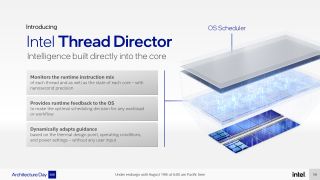
Therein lies some of Alder Lake's magic, but there's more to getting all of these architectures working together than simply placing them all on one chip. A large part of Intel's Alder Lake performance comes from utilising these two different cores in an effective manner, and to do that it uses something called the Thread Director.
The Thread Director helps your OS decide which tasks should go to which cores, by handing your OS more information than it would otherwise have available to it. Through constantly monitoring and feeding thread information back to the OS, Thread Director works to make sure your game always gets priority over your RGB lighting controller doing an update. Thus keeping your frame rate steady.
Ultimately, though, it's your OS that makes these decisions, and that's why Thread Director works best with Windows 11, which Intel worked with Microsoft on to get just right for Alder Lake.
The use of a hardware embedded Thread Director has a couple of knock-on effects for us, then. Firstly, it means you'll really want to use Windows 11 if you have an Alder Lake processor for the best performance, which has its ups and downs and isn't entirely an OS we recommend today. Secondly, there are still some oddities in the Alder Lake architecture and optimisation that mean these two different cores either aren't utilise to their fullest, or don't function at all with a handful of games.
Now, granted, a processor with a straight 16-cores is able to manage multiple workloads just fine, too, such as the Ryzen 9 5950X, but Alder Lake does have a few more performance boons up its sleeve.

The most significant is DDR5. For a long while now we've been happily plodding along with DDR4 machines, and admittedly these DDR4 kits have started to hit incredible speeds considering their humble beginnings, but times are a-changin'. DDR5 is already setting the bar higher for memory frequencies and performance, and Alder Lake is ready to meet it.
So you're looking at much higher frequencies with the trade-off being much higher memory latencies on early DDR5 kits. They also come with generally higher price tags, which isn't something PC gamers will want to hear in 2021—unfortunately, that's the reality of a brand new technology such as this coming to market. Perhaps especially so because of the ongoing global shortages affecting all manner of chips.
On the plus side, you can buy a DDR4 compatible motherboard and skip over the burgeoning DDR5 market altogether. Though do bear in mind that you are stuck with one or the other. So make your pick and be prepared to live with it for the rest of your chip's life. Or get a new motherboard, either way.
That brings us neatly onto the Z690 chipset in compatible LGA 1700 motherboards. The new socket shouldn't come as much of a surprise if you've caught sight of the 12900K itself, as the heat spreader on this chip is larger than previous Core desktop processors. It does, however, mean you will need a new motherboard for Alder Lake. These new boards do offer greater bandwidth for PCIe devices through support for PCIe 5.0, which will mean more for SSD storage than anything else, although we're only just getting used to speedy PCIe 4.0, so this is spec'd out for the future.
Specifications
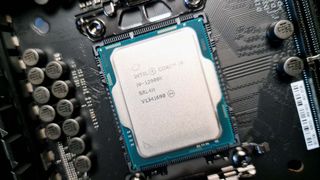
What's inside the Intel Core i9 12900K?
As the leading processor out of Intel's 12th Gen family, the Core i9 12900K offers the most cores, the highest speeds, and the best performance. It's Alder Lake running on all cylinders, which means this specific chip offers us a great glimpse of what this architecture can do when it is able to stretch its legs.
The Core i9 12900K is a 16-core processor in an 8+8 design, which means it includes eight P-Cores and eight E-Cores to meet its total core count. HyperThreading is enabled on the P-Cores, which doubles the available threads to 16, making for a total of 24 with the E-Cores factored in. That means the Core i9 12900K is tentatively a match for AMD's Ryzen 9 5950X in terms of raw core count but has to make up a little lost ground in terms of threads.
Cores (P+E): 8+8
Threads: 24
L3 Cache (Smart Cache): 30MB
L2 Cache: 14MB
Max P-core Turbo frequency (GHz): 5.2
Max E-core Turbo frequency (GHz): 3.9
P-core base frequency (GHz): 3.2
E-core base frequency (GHz): 2.4
Unlocked: Yes
Graphics: UHD Graphics 770
Memory support (up to): DDR5 4800MT/s, DDR4 3200MT/s
Processor Base Power (W): 125
Maximum Turbo Power (W): 241
Recommended customer price: $589–599
Retail price (boxed, Newegg/Overclockers): $649.99/£599.99
Those eight P-Cores are clocked mightily high, too. The maximum Turbo clock speed of the P-Cores on the Core i9 12900K is 5.2GHz, although with a base clock of 3.2GHz, you'll tend to see clock speeds somewhere between the two during real-world operation and depending on the workload.
For all its speed, the Core i9 12900K is also the most power-hungry of the Alder Lake lot, and, well, most desktop CPUs to date. Despite Intel's best efforts with the Intel 7 process node and the Efficient Cores, this chip is still quite thirsty at 241W Maximum Turbo Power (MTP).
You'll notice that's MTP, not TDP. Intel says it's doing away with the TDP specification for the 12th Gen, and in some ways, I agree with its decision, if only to be fair to our poor CPU coolers. Previous TDPs haven't been particularly representative of, well, much at all with Intel's past few CPU generations, and so MTP, along with the new Processor Base Power (PBP), appear a little more upfront.
The PBP of the Core i9 12900K is 125W, which is a match for the Core i9 11900K's TDP. Neither chip operates within this power envelope for the most part, however.
You can make matters worse by fiddling with your chip's power to ensure a stable overclock, which is not only possible with the unlocked K-series processors, such as the Core i9 12900K, and compatible Z690 motherboards, but even encouraged by Intel this generation.
The Z690 motherboard you choose will play an important role in overclocking, but beyond that, the new chipset does have its benefits for everyone, overclocker or no.
For starters, there's PCIe 4.0 support baked right into the Z690 chipset, up to 12 lanes of it. That accompanies the 16 lanes of PCIe 5.0 direct from the CPU, which means you shouldn't end up short of available bandwidth for your GPU and a handful of speedy SSDs. The availability of plenty of bandwidth also ensures there's the potential for plenty of USB ports, although that will depend on your board choice.
Speaking of bandwidth and the Core i9 12900K, like any of the 12th Gen chips, it supports both DDR5 and DDR4 memory kits. You'll need to check which your motherboard supports before you buy, as no board supports both. So you'll have to stick with your decision, either way.
Benchmarks

How does the Intel Core i9 12900K perform?
Intel's been talking a big game when it comes to Intel Alder Lake performance, and after getting my hands on the Core i9 12900K, I can't say I'm surprised, either. This chip does reclaim the gaming performance crown in almost every game we tested, and often by a large margin.
Let's not forget what the Core i9 12900K is up against. That's the Ryzen 9 5950X, potentially the best processor AMD has ever put together and the most well-suited desktop CPU for just about anything you throw at it. Not to put down the Ryzen 9 5950X in any way, but the Core i9 12900K is simply the far better gaming chip.
That's really saying something for Intel's efforts in single-core improvements on the Core i9 12900K. It's clocked to the heavens, which sure helps, but architecturally the Golden Cove P-Cores appear to be working wonders when it counts in gaming workloads.
Something particularly noteworthy here is Intel's performance in games that traditionally favour AMD's chips, such as Far Cry 6. These would usually be the games where we'd see the biggest swings towards AMD's processors in performance, but while that is true to some extent today, the Core i9 12900K has managed to head off any major advances into the lead from the Ryzen 9 5950X.






PC Gamer 12th Gen test rig: Asus ROG Maximus Z690 Hero, Corsair Dominator @ 5,200MHz (effective), Nvidia GeForce RTX 3080, 1TB WD Black SN850 PCIe 4.0, Asus ROG Ryujin II 360, NZXT 850W, DimasTech Mini V2, Windows 11
PC Gamer 11th Gen test rig: MSI MPG Z490 Carbon WiFi, Corsair Vengeance Pro RGB @ 3,600MHz (effective), Nvidia GeForce RTX 3080, 1TB WD Black SN850 PCIe 4.0, Asus ROG Ryujin II 360, NZXT 850W, DimasTech Mini V2, Windows 11
PC Gamer AMD test rig: Gigabyte X570 Aorus Master, Thermaltake DDR4 @ 3,600MHz, Zadak Spark AIO, 2TB Sabrent Rocket PCIe 4.0, Corsair 850W, Windows 11
The same goes for synthetic single-core performance. Look to Cinebench R23, which I ran through a 10-minute cycle to ensure no power draw funny business, and you'll notice that the Core i9 12900K delivers a tremendous leap in single-core performance over the best of Zen 3 in the Ryzen 9 5950X. Even the lower-clocked Core i5 12600K, too, delivers a huge bump here, so that's absolutely a return to form for Intel.
Pair its excellent single-threaded performance with the new wave of E-Cores and you're onto a winner in multi-threaded performance, too. To my surprise, the Core i9 12900K manages to outmuscle the Ryzen 9 5950X, a straight 16-core chip, in Cinebench R23. In Time Spy's CPU tests, it runs away with it. In all honesty, I wasn't expecting the blend of P-Cores and E-Cores to do this in such a way.
The Ryzen 9 5950X does hold its own in x264 v5.0, however, and just edges out the Core i9 12900K in Shadow of the Tomb Raider and Civilisation 6's turn time benchmark, where AMD has been stronger in recent years. So it's not a flawless victory for Intel, though it is still a very convincing one.




Though I am missing one benchmark result for Intel's Core i9 12900K: Assassin's Creed: Valhalla. The reason being it doesn't work on Alder Lake, or at least our system and probably a fair few more. As Intel told me, "We are aware of an issue with Assassin’s Creed: Valhalla, and we are working with the game publisher on a fix." Though this does play into the slightly wobbly aspect of Alder Lake at launch.
As I've said before, Alder Lake isn't an iterative update to an already long-standing architecture. For that, it appears some creases weren't ironed out ahead of launch, and one is the occasional incompatible game, as Intel stated ahead of time in regards to DRM solution, Denuvo.
Intel said it was yet to remedy an issue with Denuvo on Alder Lake for 32 games, which was causing issues playing these games on the platform, but the remainder of the library was good to go.
So clearly there are still some areas to run the iron over, even post-launch. I can only be hopeful that these issues are solved early on and that new releases are correctly optimised for Alder Lake. I would assume so, but I can't say for sure. So sit tight, and if you're a big Assassin's Creed: Valhalla fan, maybe stick with your old CPU for a little while before upgrading to the 12th Gen.


When it comes to CPU power and thermal performance, as I mentioned before, the Core i9 12900K is not the most power-savvy chip going. At least in its default, out-of-the-box, state.
Intel has clearly still had to push its Core i9 package to the nines to make sure it's capable of beating AMD's top Ryzen processor, and that means I'm seeing a much higher power draw under load than AMD's Ryzen 9 5950X during x264 v5.0 benchmarking, at a 53% increase, and a 6°C increase in peak temperature.
That's even in excess of the Core i9 11900K, the chip infamous for its high wattage draw. Though Intel writes this off as saying that, if you were to drop the Core i9 12900K to even a fraction of its 241W MTP, at just 65W, it would still be a match for the Core i9 11900K.
At least the performance is there to justify the leap in wattage by way of comparison with Intel's own chips, but next to AMD's processors it still appears comparatively high.
Analysis
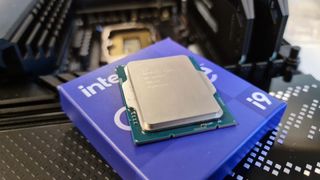
What does the Intel Core i9 12900K mean for PC gaming?
I mentioned at the beginning of this review that it's important to focus on the real-world performance and capability of these chips, and not get too lost in the competition aspect of it all. But hey, I'm human, and the ongoing tug-of-war back and forth between Intel and AMD is one of my favourite spectator sports. So let's get into what the Core i9 12900K, and the wider Alder Lake 12th Gen release, means for that all-important battle.
Starting with comparisons to Intel's previous generation, the 11th Gen, and the Core i9 11900K felt like a processor launched to claim the world's fastest gaming processor title, With the Core i9 12900K, Intel may have built one that actually deserves it.

Windows 11 review: what we think of the new OS
How to install Windows 11: safe and secure install
What you need to know before upgrading: things to note before downloading the latest OS
Windows 11 TPM requirements: Microsoft's strict security policy
As both a proposition to gamers today and a glimpse of what's to come from Intel, the Core i9 12900K is an incredibly exciting chip and one we've been waiting to get our hands on for a long time. It's an exciting platform, too. Often playing catch-up to AMD this past half-decade, Intel is delivering the latest technologies, such as DDR5 and PCIe 5.0, ahead of AMD this time.
Pricing is what largely decides our opinion of these impressive processors, and rumours had initially foretold of a much closer pricing battle between Intel's 12th Gen and AMD's Ryzen 5000-series. Intel's pricing wasn't quite as sky-high as expected, though, and we're left with a situation where Intel's 12th Gen could put a lot of pressure on AMD's Ryzen 5000-series.
Let's hone in on the Core i9 12900K we're discussing here today. This chip is listed at its cheapest at $589 on Intel's Ark product database, and that's $210 cheaper than the MSRP of the AMD Ryzen 9 5950X. To be fair to AMD, though, let's draw a comparison between the actual on-sale price of these two chips right now instead, which are more like $649 for the Core i9 12900K and $749 for the Ryzen 9 5950X.
If you were to actually hit the checkout with either chip today, that makes for roughly a $100 saving with Intel's Core i9 over AMD's Ryzen 9.
That's probably going to have an impact on AMD's outlook, as the company no longer has a totally unmatched enthusiast desktop processor. The Core i9 12900K is a match, and it's cheaper, effectively shifting the bar for future enthusiast desktop processors from both companies.
For AMD, that would appear to be its 3D V-Cache processors, which it says are already in production and should improve gaming performance by up to 15%. If you scan over my benchmarking numbers, that has the potential to once again give AMD a lead in many games. But these chips are going to have to deliver a significant boost to compete at their current prices, and for once it's AMD in the hot seat to justify its premium pricing rather than the other way around.
At least AMD's AM4 platform offers plenty of cheaper motherboards today, something we may have to wait around for a bit longer to see from Intel's board partners.
There are also still some finer points to work out with Alder Lake as I write this, though it's been less hit-or-miss in testing than I had expected it to be at times during its development and unveiling. Ultimately, though, it feels like Intel has made forward progress with Alder Lake, and that can only be a good thing for our gaming PCs. More competition begets more aggressive prices, more competitive feature sets, and faster adoption of up-to-date standards.
For those reasons, and for its pure speed advantage today, the Intel Core i9 12900K means a lot for PC gaming.
Verdict
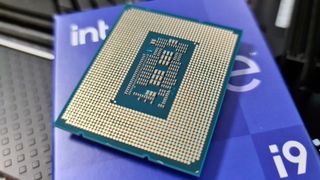
Should you buy an Intel Core i9 12900K?
The Core i9 12900K aims for the top spot as the best CPU for gaming, and by most metrics makes it soundly. By hook and by crook, Intel has leapfrogged back in front of AMD in gaming performance, utilising a new architecture, process, approach, and platform—all the things we've been waiting patiently for it to do.
The Core i9 12900K totally obliterates previous Intel generations by most metrics.
From an enthusiast's point of view, and the Core i9 12900K is an enthusiast chip after all, this chip totally obliterates previous Intel generations by most metrics: single-threaded performance, multithreaded performance, clock speed, and memory performance. And you're probably paying less for the privilege, which is really saying something in this day and age.
From a gamer's point of view, the Core i9 12900K can deliver the performance to game, stream, capture, and more, all at once. Though it must be said that cheaper chips such as the Core i5 12600K would appear the more sensible buy if you're primarily gaming, since even the Core i5 makes mincemeat of the 11th Gen Core i9 for PC gamers, and will only hinder your graphics card at 4K and beyond as much as most other modern processors.
To tie a bow on it, if you're genuinely in the market for a new processor at this moment and you want the best for gaming, the Core i9 12900K is that and more. The Z690 platform offers the only way into the most cutting-edge technologies around today, and for PC builders in 2021, it's sure nice to know you won't be falling behind the curve in 2022 once PCIe 5.0 and DDR5 are more widely adopted.
So if you fit the enthusiast profile and don't mind some added platform costs, yes, you should buy the Core i9 12900K.
The Core i9 12900K is an enthusiast processor built for boasting. It offers the highest gaming frame rates in most titles and its clever new architecture and cutting-edge features provide multithreaded performance on tap. If you're building a super high-end PC in 2021, this is now the chip to do it with.

Jacob earned his first byline writing for his own tech blog. From there, he graduated to professionally breaking things as hardware writer at PCGamesN, and would go on to run the team as hardware editor. He joined PC Gamer's top staff as senior hardware editor before becoming managing editor of the hardware team, and you'll now find him reporting on the latest developments in the technology and gaming industries and testing the newest PC components.
